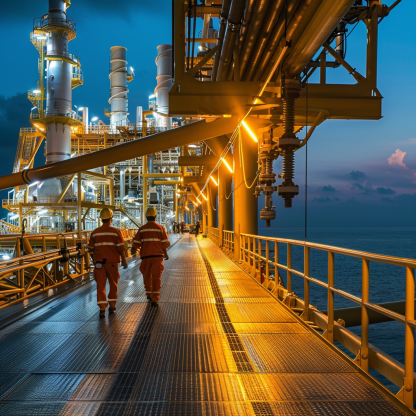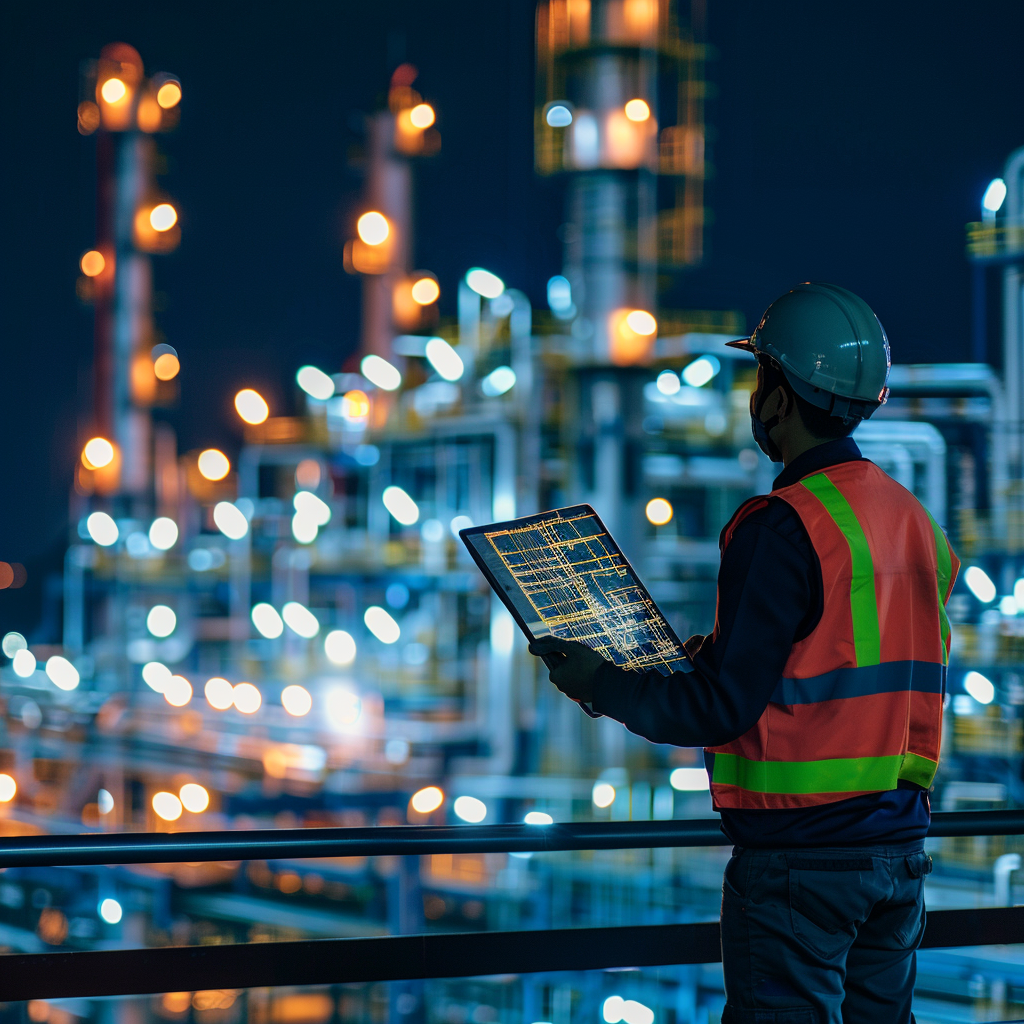The Role of Safety Integrity Level (SIL) Classification in the Oil and Gas Sector
- July 27, 2024
- Posted by: Velosi Author
- Categories: Asset Integrity, Insights

Safety Integrity Level (SIL) ensures safety. Operations within the oil and gas industry can be dangerous to which safety is important. We should safeguard the environment and our employees. Let us have an overview of What is SIL? Its operating methodology? And why is it important?
Understanding Safety Integrity Level (SIL)
Consider SIL a score for how good a safety mechanism is. This score system, Safety Integrity Level, is a key part of global safety rules IEC 61508 and IEC 61511. These standards make sure safety-related systems work well and can be trusted.
The Four SIL Levels
The SIL system is divided into four sections, which are designated as SIL 1 to SIL 4. Every sector shows how likely the system might fail when needed, with SIL 4 standing as the trustworthy and SIL 1 as the least reliable:
- SIL 1: PFD from 0.1 to 0.01
- SIL 2: PFD within the range of 0.01 and 0.001
- SIL 3: PFD between 0.001 and 0.0001
- SIL 4: PFD between 0.0001 and 0.00001
Higher SIL levels mean the system is less likely to fail, ensuring higher safety and reliability.
Why SIL Matters in the Oil and Gas Sector
Keeping Equipment Running Smoothly
The oil and gas industry considers equipment downtime to be a significant disadvantage. It stops production and strikes the risk of mishaps. The role of SIL classification is to spot and line up maintenance of crucial equipment. It helps keep it running and safe while maintaining its integrity.
Ensuring Safety
The oil and gas field puts a strong emphasis on safety. If equipment doesn’t work right, terrible mishaps can occur, such as blasts, fires, and leakages. That’s where SIL ratings step in. They lessen the danger by making sure the safety measures are solid and dependable. When firms stick to SIL rules, they do a better job of keeping their workers and nature safe.
Cost Efficiency
Old-style maintenance can be inefficient, sometimes leading to needless inspections and changes. Velosi’s SIL services pave the way for a more specific method, concentrating on the asset’s state and output. Not only does this cut down on maintenance expenses, but it also boosts asset permanence.
Meeting Regulatory Standards
In the oil and gas industry, following safety standards is a must. All over the globe, regulatory authorities demand that international safety standards are met. By using SIL-rated systems, businesses can uphold these essential rules, steering clear of expensive penalties and disciplinary actions.
Real-World Applications of SIL
Offshore Drilling
Oil drilling sites in the ocean deal with harsh, ever-changing conditions. It’s vital to use SIL ranking in these areas to control dangers like uncontrolled oil and gas leaks. To illustrate, a big oil business used safety systems rated at SIL 3 for controlling oil gushers, greatly reducing the chances of disastrous accidents.
Refineries
Refineries dealing with potent materials are dangerous sites. Using systems with an SIL rating guarantees critical processes run securely. By bettering its safety measures for SIL 2 and SIL 3, a certain refinery recorded fewer mishaps and enhanced its total safety.
Pipelines
Long pipelines cross extensive spaces, many times passing through areas sensitive to ecology. The SIL grade for identifying leaks and emergency stop systems guarantees speedy reactions to possible problems, lessening harm to the environment. A pipeline handler using SIL 2-rated systems has noticed faster leak finds and reaction times, lessening the damage to the environment.
Implementing SIL: Best Practices
Comprehensive Training
Putting SIL into action isn’t merely a matter of tech; it’s about proper management as well. Proper training guarantees that maintenance-leading sources grasp the philosophy of SIL and put it to good use. They deal with concepts like Failure Modes and Effects Analysis (FMEA) as well as condition-focused supervision.
Leveraging Advanced Technology
Today’s tech is vital in SIL. IoT sensors, predictive tools, machine learning, and rapid checks provide valuable information. They help guess and stop breakdowns. By using this tech, firms can boost their SIL programs’ success.
Continuous Improvement
Setting up SIL is a never-ending task. Keeping tabs on and refreshing upkeep plans with fresh details can keep systems in good shape. Suggestions from maintenance squads and others involved are key to constant betterment.
The Broader Impact of SIL with VAIL-PHA Software
SIL is an important factor and is considered an essential component in meeting the performance and dependability of SISs in the oil and gas industry. VAIL-PHA Software: Process Hazard Analysis has a very significant contribution to higher levels of SIL since it involves an organized approach toward the analysis of the hazards and the risks associated with them. This software significantly outlines and helps the operators to perform detailed and organized PHAs to evaluate the likelihood of and consequences resulting from different failures.
Complementing other tools and methods of risk assessment, VAIL-PHA helps to select proper SIL levels for safety functions and guarantees their required reliability levels. SIL integration: During the operations, VAIL-PHA helps manage and confirm the maintenance of the systems’ compliance with the SIL. The efficiently integrated data management provides capacities to store all the documentation and outputs from the conducted hazard analysis and SIL assessment, which helps in meeting the requirements of both regulation and audits.
Thus, with the help of VAIL-PHA, it is possible to identify and control potential security threats, as well as select the most efficient maintenance measures to provide maximum protection for employees and the surrounding world. This eventually results in better operating conditions, cost and time optimization, and optimization of the product asset.
Enhancing Safety and Trust
Towards concentrating on SIL rules, businesses show an earnest focus on safety. A good safety track record does more than just save lives, it boosts the image of the company, giving them a strong foothold in the industry. The oil and gas industry holds great responsibility. When equipment fails, it can harm our surroundings. Systems with a SIL rating make these operations safer, reducing faults and preserving our environment.
Conclusion
The Safety Integrity Level, or SIL, is key to safety control in the petroleum industry. This system ensures that safety measures are dependable and can stop risky events. Enhancing safety, meeting regulations, cutting downtime, and safeguarding the environment through effective machine learning and predictive maintenance are all roles it plays.
Moreover, SIL classification is vital to industry work. As the industry adapts and faces new hurdles, strong safety systems are of utmost importance. Keeping SIL-rated systems isn’t just a rule, it shows a promise to keep workers, nature, and the community safe. By focusing on SIL classification, leading industries can operate securely and ecologically in the future.
Stay connected for more blogs!
Please contact us for more information and assistance.



